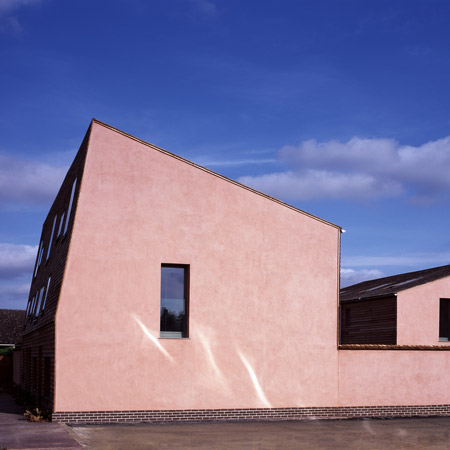
Clay Fields by Riches Hawley Mikhail
London architects Riches Hawley Mikhail have completed an affordable, sustainable housing scheme within an existing village in Suffolk, UK.
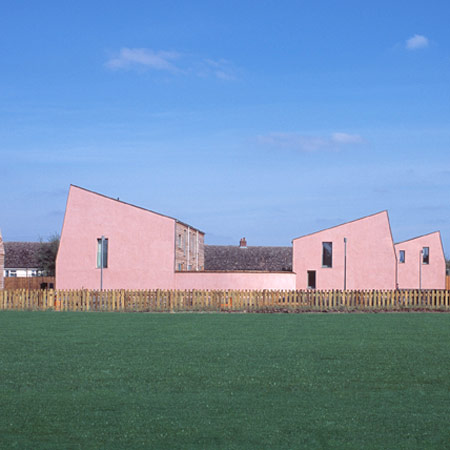
The buildings make use of use a spray-on material made from a mixture of hemp and lime, which captures carbon from the atmosphere. A biomass heating system using locally-sourced woodchips heats all the homes from one boiler.
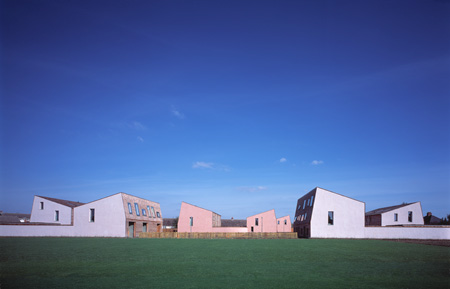
Called Clay Fields, the development consists of 26 homes.
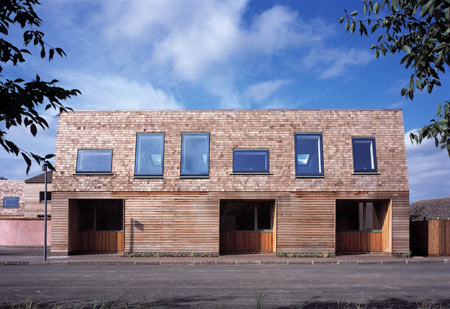
"It combines contemporary design, sustainable construction with low energy use and innovative local materials," say the architects.
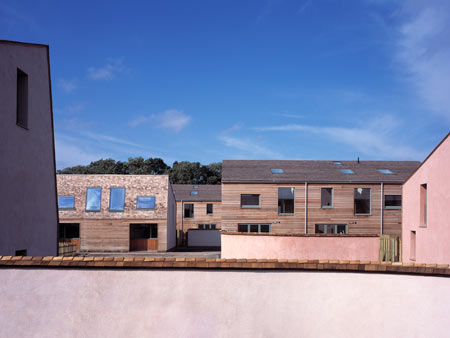
Photography by Nick Kane. The following is from Riches Hawley Mikhail Architects:
--
Eco-minimal housing completes in rural Suffolk
Riches Hawley Mikhail Architects’ new affordable housing scheme, situated within an existing village in Suffolk will be officially opened on Friday 28 November. Clay Fields consists of 26 affordable homes - nine three-bed houses, 13 two-bed and four one-bed flats for local people. It combines contemporary design, sustainable construction with low energy use and innovative local materials.
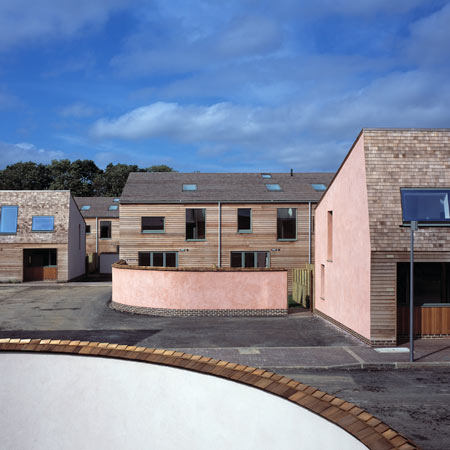
For example, the project sees the first UK sprayed application of Hemcrete®, a mix of lime and hemp, which captures carbon from the atmosphere – making it a less than zero carbon material. It helps to make the construction airtight by embedding the timberframed structure in the insulation.
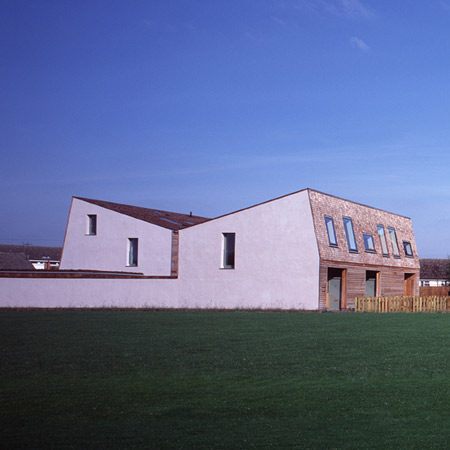
Riches Hawley Mikhail were commissioned in 2006 following a RIBA design competition led by Orwell Housing Association in partnership with Elmswell Parish Council, Mid Suffolk District Council and the Suffolk Preservation Society. The competition was a response to the lack of affordable housing for local people in a rapidly-growing commuter belt. The brief demanded a high quality, low carbon homes without any ‘greenwash’ or highly visible environmental interventions.
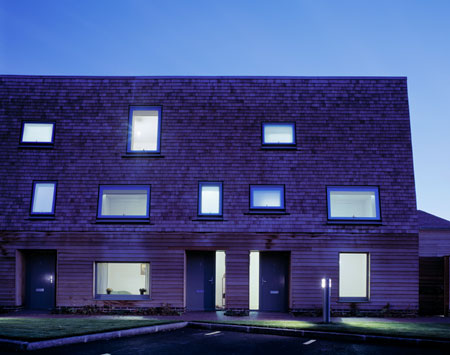
There are no solar panels or wind turbines extruding from the houses. It is above all, the thoughtful design that gives the project its eco-credentials. This is eco-minimalism. Riches Hawley Mikhail has designed a terrace consisting of three houses at Clay Fields. These terraces have been carefully positioned in distinctive groups staggered around open space and adjacent to the neighbouring housing.
Update 19/11/08: Riches Hawley Mikhail have provided the following three interior images.
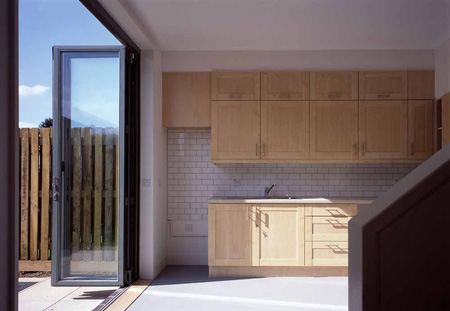
The homes are designed to be low, in keeping with the surrounding buildings to minimise the visual impact and avoid overshadowing. Orientated northsouth to maximise the heat of the sun and generate the best possible light, even the low winter sun (typical of the area’s flat landscape) will reach everyone.
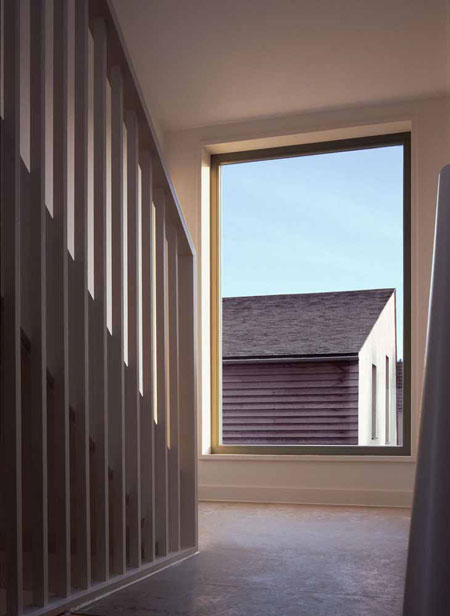
The front facades are clad in continuous wooden weatherboards. Variety is brought to the elevations through the different positioning and size of windows, punched out of the wooden cladding. The arrangement of the windows was determined by engineers Buro Happold, who worked out the optimal relationship between solar gain and daylight, as well as making the most of the beautiful views out. All homes get a view – they do not look onto each other but onto open space.
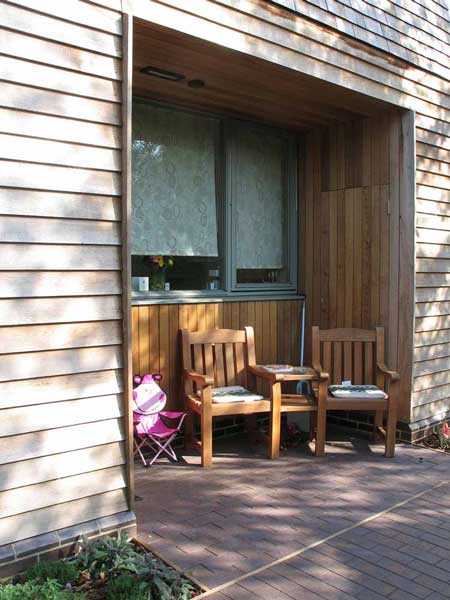
The landscaping was born out of a desire to make a series of enjoyable places for people to look at and use as well as being a vital contribution to village life. The landscaping includes four communal green spaces that can be used by both the residents and the neighbouring community: a low maintenance wildflower meadow, a Suffolk-apple orchard, allotments with composting facilities and a kick-around area. This mix of landscape treatments and a series of ‘swales’ (dips and hollows like those made by medieval ploughing), provide natural drainage to the site which was previously prone to water-logging.
Internally, the layout is carefully designed to maximise space, light and through-ventilation. The floors are staggered with an open stairwell running from the kitchen to the rooflights allowing a through-flow of air, so the homes are ventilated naturally in the summer. In winter, an additional mechanical system removes 80 per cent of heat from outgoing air and uses it to heat incoming air.
The project features a number of systems that have helped to make it an energy-efficient build and will keep the energy bills low when in use. Innovations include the use of Isonat – a hemp/ linen insulation material, a biomass community heating system (fuelled by locally sourced wood chips) that heats all the homes from a single boiler and rainwater recycling. Site waste was minimised with the use of Hemcrete®, pre-fabricated timber frames and topsoil has been stored and redistributed across the site.
Residents have been consulted at every stage. The local primary school has been involved in the project from the beginning, with site visits and talks encouraging a real sense of ownership of both the homes and the spaces where the children will play. Residents will be given a user-friendly guide, “How to live in your eco-home”, containing helpful tips like when to and when not to open windows, to ensure that the green aspirations of the project are continued in practice. Buro Happold will carry out an evaluation of energy consumption, once all the households have moved in.
Stephen Javes, Chief Executive, Orwell Housing Association comments: "We are very proud of this new development at Elmswell, not only because of its sustainable and energy saving features but because it fulfils our major aim of creating affordable homes which are attractive and good to live in and which add value to the local community."